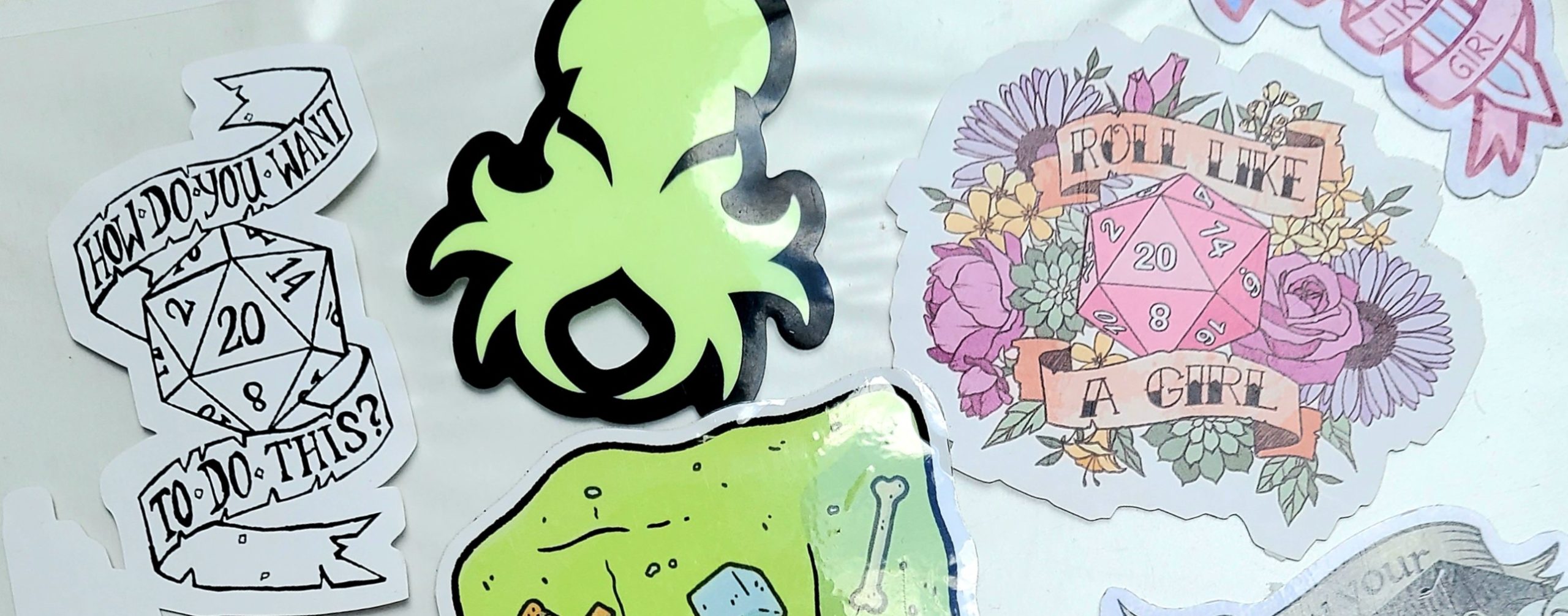Hello! Even though you haven’t asked, I thought I would share with you the House Rules for Dungeons and Dragons that I use at my table. These are rules that caught my fancy from podcasts, source books or random internet searches.

Before each campaign I share a document with my players that details each of the house rules we are playing with that way nothing (in theory) is a surprise. That leans pretty heavily into the assumption that my players read what I send them.
Without Further Ado the following are rules used at my table:
- I Know a Guy
- CR Healing Potion Rule
- Mixing Potions (DMG)
- Critical Fumbles/Critical Hits
- CR Resurrection Rules
- Spell Scroll (DMG)
- Near Miss
House Rules
I know a guy
I talked about this rule in a previous post that I wrote. This rule was a random internet find that Epic Fred shared with me. The story telling element and player engagement of this rule really appealed to me. It is limited to once a chapter per character otherwise I feel like it has the potential to really derail or spoil a game.
The gist is that this rules gives the characters a chance to declare that “they know a guy” and see if this mysterious ally can help them with some sort of in-game conundrum.
The details for the rule can be found here: I Know a Guy
CR Healing Potion rule
To me this rule just made sense. You are in a tense situation, you are hurting. You grab the vial, bite out the cork, chug it and probably toss the vial. It’s a fast enough action that counting it as a bonus seemed friendly and logical.
Especially when paired against the complex action of feeding a healing potion to an unconscious ally. It really didn’t mesh in mind that both things would take the same amount of time.
So bonus action to gulp for yourself and full action to make someone else drink one.
Mixing Potions (DMG)
My players are chaotic, foolish and definitely unpredictable. When I came across this optional rule in the Dungeon Master’s Guide it automatically tickled my fancy because I could see one of my characters doing this. Whether it was from curiosity or desperation it just seemed a likely action. And a potentially hilarious one.
On page 140 of the DMG there is a table of potential outcomes from mixing potions. Some are harmless, hilarious and some deadly …. Much like mixing potions would be!
Critical Fumbles/Critical Hits
I know that crit fumbles are a hot topic. A lot of people don’t agree with the mechanic because they feel that large failures take the fun out of the game. I believe the opposite, while I enjoy celebrating a good critical success, a critical fumble can lead to so many good things.
Hear me out.
One of the key ways we learn in life is through failure. That means that critical fumbles give characters a chance to learn and overcome. They can become amazing turning points for a character’s story and often are just as or more memorable than the successes.
Also, critical failures don’t always have to be doomsday events. People are clumsy. We fall. Sometimes we fart loudly in public and give away our positions to the bad guys. Critical failures are also a time to bring levity to a game. Balance in all things is key so comedy and drama should be used in equal measure.
As far as critical fail/success tables. Sometimes I use them, sometimes I don’t. Sometimes the character has a great idea for what will happen and as long as it isn’t over the top I will let them guide me. And sometimes the successes or failures come at the right moment and fit into the narrative perfectly. When I am stuck I will refer to a table. I am currently experimenting with this one of my own making.
Crit Fail Table
Roll a D4 to determine what table is used for the failure.
This table is meant only for the mechanics the flavour/description will be provided by the DM
| 1 – weapon dmg* | 2 – effect** | 3- ally dmg | 4 – self dmg | |
| 16 – 20 | Free and clear; breath easy | |||
| 11- 15 | Surface dmg only – the weapon gains a scratch or a nick | Gain effect DC10 to avoid it | 3 dmg to ally | 4 dmg to self*** |
| 6 – 10 | Weapon gains 1 damage hit | Gain effect DC15 to avoid it | ½ dmg to an ally | ½ dmg to self |
| 2 – 5 | Weapon gains 2 damage hits | Gain effect DC20 to avoid it | Normal dmg to an ally | Normal dmg to yourself |
| 1 | Weapon breaks | Gain effect DC25 to avoid it | Dmg and a 1/2 to an ally | Dmg and a ½ to yourself |
* All basic weapons can sustain 5 damage. Weapons with bonuses (+1 etc) get the additional bonus to their damage pool. I.e a plus 1 sword can sustain 6 damage
- Weapons will break once they have sustained the maximum dmg that it can take
- Weapons can be repaired at the proper craftsman for half their cost as listed in the PHB
** Effects have to make sense with the situation that the group is in.
*** based on the D4 roll
CR Resurrection rules
The first time I listened to a resurrection spell cast in Critical Role I fell in love with this idea. Resurrection should not be easy. The rules outlined for a successful resurrection by Matt Mercer appealed greatly to the story teller in me. It allows for some rich character RP and adds to the gravity of the moment.
I firmly believe that if a character dies it should be emotional. The loss of a character should be treated with respect and gravitas. If a character can easily pop back into existence then the game has no stakes and could be repetitive. Fred wrote an article earlier on the importance of character consequences.
I use the Tal’Dorei Campaign book when I use the alternate resurrection rules. However they can also be found here: Nerdist: Critical Role Resurrection
Spell Scroll (DMG)
Learning to use magic is not easy. A lot of magic user’s backstories include magical mishaps that shape the character’s personality in some way. Keeping this in mind I don’t think that using a spell scroll should be easy either. I mean wizards bend over backwards to learn how to read those things so why can the barbarian pick it up and use it?
Now I do realize that there are rules against it being that simple but many of my past experiences have been that DMs often just let someone use a scroll if they found it.
Reading the Dungeon Master’s Guide I came across an optional rule that fit my feelings really well. Here is the cliff notes:
Anyone can cast from a spell scroll but not everyone can do it well. If you cannot understand the scroll, are not a magic user, or its not on your list you will need to succeed on an intelligent skill check. The DC is 10+ the spell’s level.
On a failure you need to make an intelligence saving throw DC10. If you succeed are free from harm. On a failure you roll a D100 on the Scroll Mishaps table. (page 140 DMG)
Near Miss
Okay! Last one and possibly the most simple. My players have a habit of tracking the monster’s AC. I like to add in some unpredictability. Mostly because life isn’t predictable. I use a very simple “Near Miss” rule:
If a PC rolls one (1) under the AC of an enemy the GM will flip a coin.
- Heads: The strike hits but the damage is reduced, the PC does not apply their dmg bonus to their roll.
- Tails: The strike misses no indication of how close the strike was to hitting
This rule came from a suggestion I heard or read somewhere but the mechanics are from my brain. It is currently being play tested.
I wonder if by writing this my players are more likely to read the rules we use at table.

